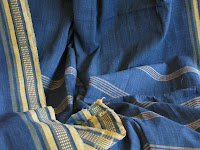Here is the introduction to a lecture on Gandhian philosophy & practice in industry[to be given at the Class in Cooperation & Development at University of Pavia next month]:
Gandhi promoted a synthesis of Hindu, Jain & Buddhist philosophies and was also influenced by Christian tradition*. He insisted that fundamental principles could & should be practically applied at all levels in all fields, personal, political, economic & social, and that a philosophy was valid only as far as it was practiced.
And when he read John Ruskin’ s Unto This Last Gandhi found the economic philosophy that he was looking for. Ruskin criticized economic theory as encouraging the materialistic and base needs of human beings and neglecting the importance of higher moral values and needs. While in his native land Ruskin’s ideas were dismissed as utopian & romantic, Gandhi & his economic collaborator Joseph Kumarappa used them to develop a clear, cogent and well-defined economic theory to strengthen the vast existing ‘village [pre-industrial revolution] industries’ of India. This was Gandhi’s philosophy in practice, and it became part of the struggle for the independence of India from colonial rule. In opposition to the colonial practice of introducing high-energy, centralized industries based on industrial revolution technologies, he strongly supported the revival of pre-industrial technologies – chief among them cotton textile production - but also a host of other artisan industries.
Gandhi’s ideas were in tune with the Anarcho-syndicalist philosophy of his day# but clashed with neo-classical economic theory, which is built around individual self-interest, and denies the possibility of any evolution to a higher social & moral plane of the submission of individual self-interest to the greater benefit of society in a word, unselfishness. For Gandhi, society too like the individual, must always strive to reach a higher evolutionary level.
* ‘My young mind tried to unify the teaching of the Gita, The Light of Asia, and the Sermon on the Mount’
from M K Gandhi 'The story of my experiments with truth'
# 'For the anarchist, freedom is not an abstract philosophical concept, but the vital concrete possibility for every human being to bring to full development all the powers, capacities, and talents with which nature has endowed him, and turn them to social account.
…For Rocker, "the problem that is set for our time is that of freeing man from the curse of economic exploitation and political and social enslavement"; and the method is not the conquest and exercise of state power, nor stultifying parliamentarianism, but rather "to reconstruct the economic life of the people from the ground up and build it up in the spirit of Socialism."
From Noam Chomsky ‘Notes on Anarchism’
.... comments welcome
















.jpg)
































